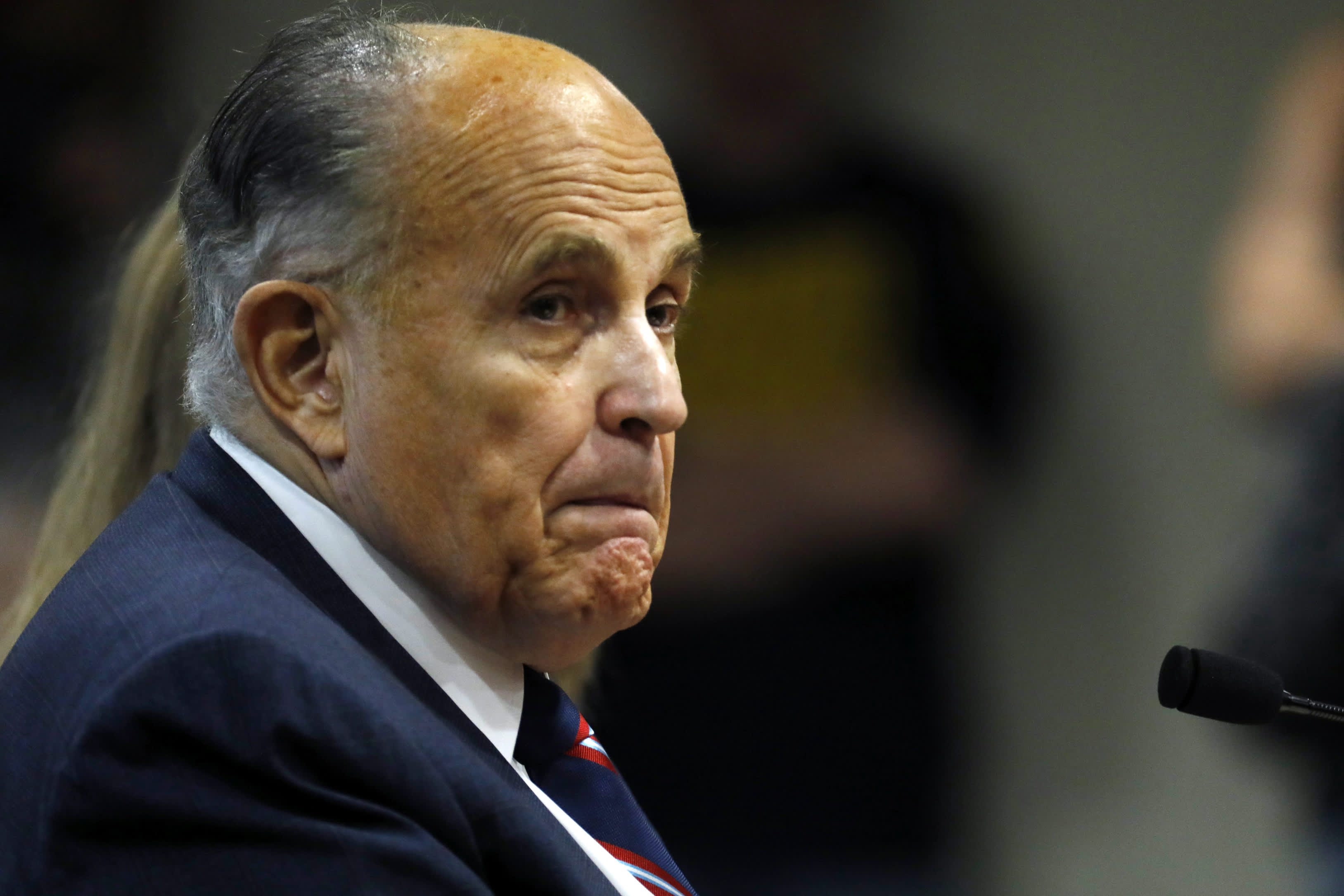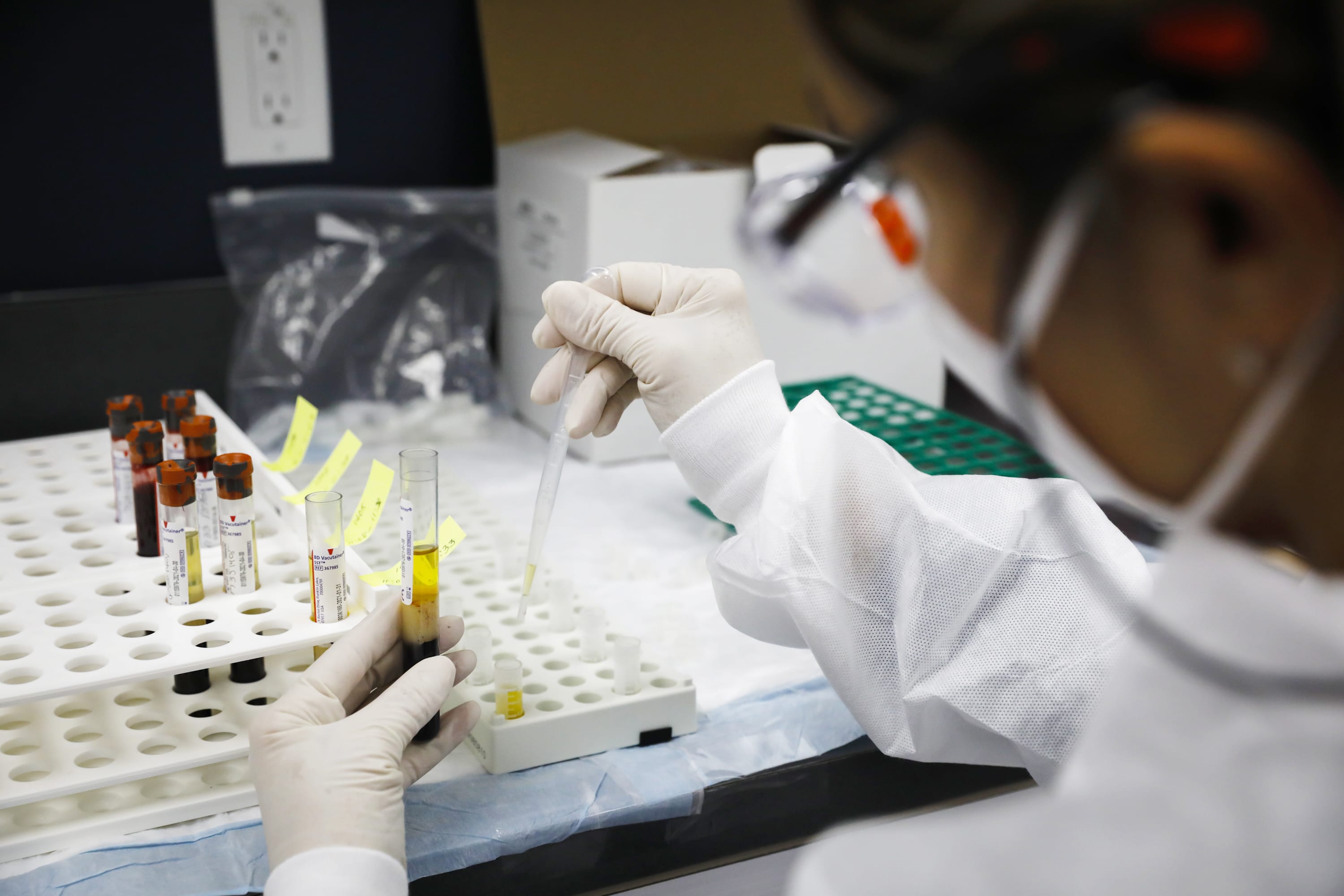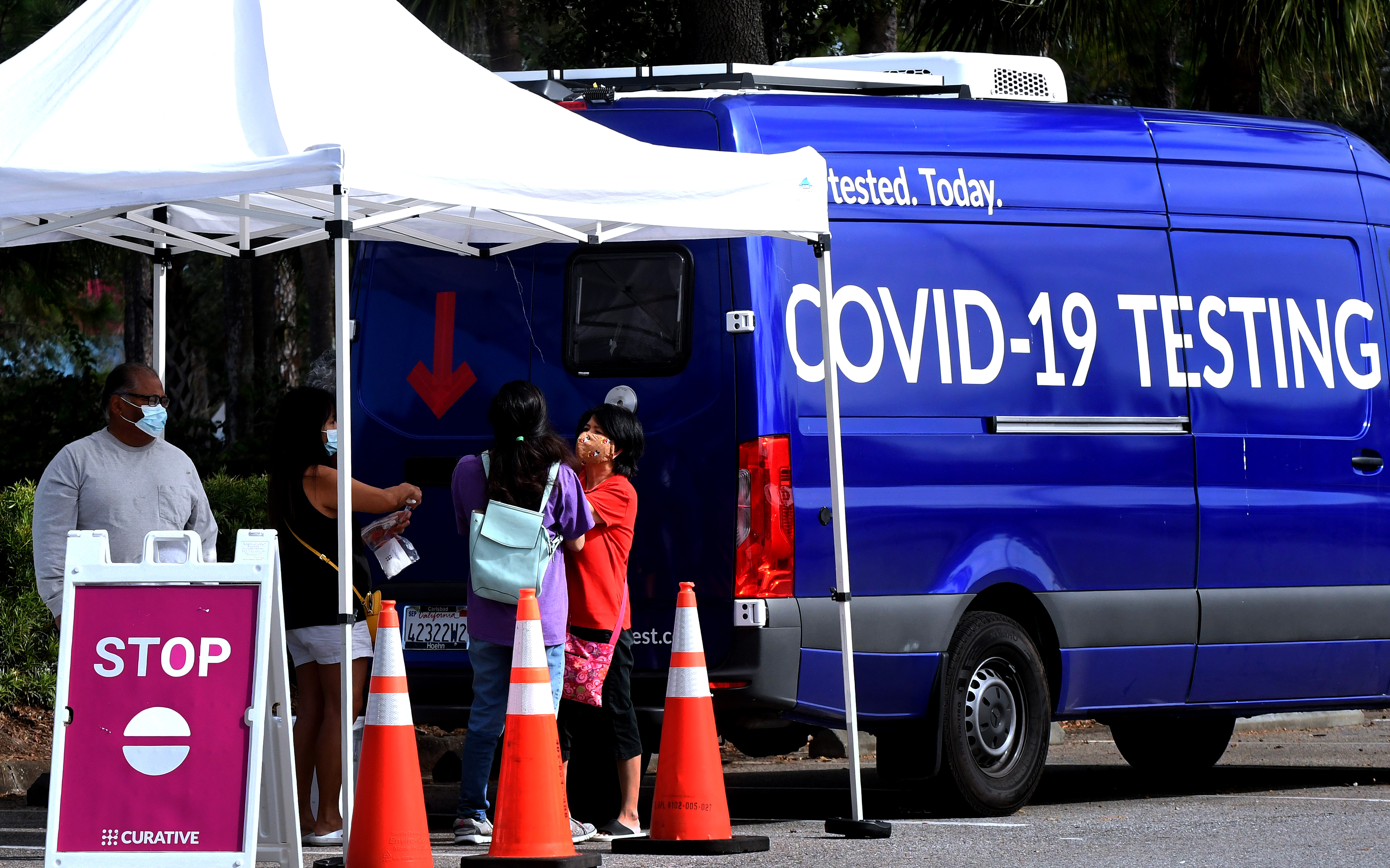Los Angeles County shattered its daily record of coronavirus cases Sunday as another 10,528 infections were reported, the fifth time in the past six days that a new record has been set.
The county also reported 23 additional deaths, bringing the county's totals to 449,851 cases and 7,909 fatalities. The number of county residents hospitalized with the virus, already at an all-time high, rose from 2,769 on Saturday to 2,855.
The staggering numbers came with the entire Southern California region hours away from sweeping new health restrictions intended to stem the rapidly increasing number of hospitalizations and prevent intensive care units from being stretched to the breaking point.
Gov. Gavin Newsom's "regional stay-at-home" order goes into effect at 11:59 p.m. Sunday, triggered when intensive-care unit bed availability remained below 15% in the 11-county Southern California region after Saturday's daily update, according to the California Department of Public Health.
The region's available ICU capacity was 10.3% on Sunday, down from 12.5% Saturday and 13.1% Friday. The Southern California region consists of Los Angeles, Orange, Riverside, San Diego, Imperial, Inyo, Mono, San Bernardino, San Luis Obispo, Santa Barbara and Ventura counties. The stay-at-home order will be in place for three weeks and will bar gatherings of people from different households.
Regions will be eligible to exit from the order on Dec. 28 if ICU capacity projections for the following month are above or equal to 15%.
Under the order, the following businesses/recreational facilities will be forced to close:
- indoor and outdoor playgrounds;
- indoor recreational facilities;
- hair salons and barbershops;
- personal care services;
- museums, zoos, and aquariums;
- movie theaters;
- wineries;
- bars, breweries and distilleries;
- family entertainment centers;
- cardrooms and satellite wagering;
- limited services;
- live audience sports; and
- amusement parks.
Schools with waivers will be allowed to remain open, along with "critical infrastructure" and retail stores, which will be limited to 20% of capacity.
Restaurants will be restricted to takeout and delivery service only. Hotels would be allowed to open "for critical infrastructure support only," while churches would be restricted to outdoor only services.
Entertainment production -- including professional sports -- would be allowed to continue without live audiences. Some of those restrictions are already in effect in select counties.
"This week, almost 49,000 people tested positive for COVID-19," county Public Health Director Barbara Ferrer said on Saturday. "We can anticipate based on our experience, that 10% of newly infected individuals are likely to require hospital care a couple of weeks from now. That translates to close to 5,000 patients, and if even 20% of these patients need care in the ICU, they will require 1,000 staffed ICU beds. This is our likely reality in two weeks."
"And if we all can't get behind the existing directives to stay home as much as possible and avoid all non-essential activities and places where you are likely to be in contact with non-household members, we are likely to bear witness to one of the worst health care crises our county has seen in our lifetime. The reality is we can still prevent the continued increases in people suffering and dying if we focus all of our collective will on doing what we know how to do; this is the time to take care of each other, and to always wear a face covering and keep a physical distance of at least 6-feet when outside and around others."
Los Angeles Mayor Eric Garcetti, acknowledging the mental health toll the pandemic and related lockdowns have brought, suggested people "call a friend or family member to check on them. Connect virtually with the people you love."
"Go for a walk or a bike ride, keeping a safe distance from others," Garcetti tweeted Saturday. "We will get through this."
Officials with the Los Angeles County Department of Public Health said the county's Health Officer Order will be modified to align with the State Regional Stay Home Order to prevent crowding and mingling among non-household members and overwhelming the local health care system.
Newsom said the new order is "fundamentally predicated on the need to stop gathering with people outside of your household, to do what you can to keep most of your activities outside and, of course, always ... wear face coverings, wear a mask."
The governor also noted that the state still has a travel advisory in place recommending against non-essential travel and urging people to quarantine when they return to the state. Dr. Mark Ghaly, the state's Health and Human Services secretary, acknowledged there is no real mechanism for enforcing such a travel restriction, but the state will rely on public cooperation.
"We believe that really emphasizing this is what we hope our citizens will do because their communities are at particularly high risk, their hospitals are having difficulty keeping available ICU beds open, that people will restrict their travel statewide," he said.
The San Joaquin Valley will also enter the new shutdown protocol Sunday night, as its ICU capacity dropped to 8.6% on Saturday. California has grouped its counties into five regions: The Bay Area, the Greater Sacramento Region, Northern California, the San Joaquin Valley and Southern California.
Meanwhile, the first in what organizers said will be weekly lockdown protests was scheduled to be held outside Garcetti's official residence at 6 p.m. Sunday.
Protesters plan to shine flashlights directly into the sky to send a worldwide signal that lockdowns are not acceptable.
The state's full stay-at-home order can be read at https://www.cdph.ca.gov/




